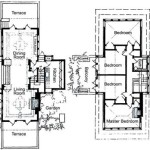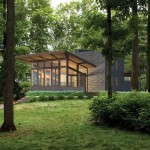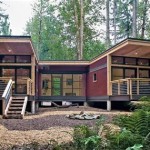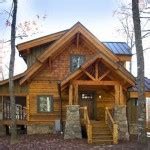Design Your Dream Home: House Plans for 1800 Square Feet
The prospect of designing a dream home is often accompanied by both excitement and apprehension. Navigating the numerous design choices and ensuring the realization of a functional and aesthetically pleasing space requires careful planning. For those considering a home within the 1800 square feet range, the challenge lies in maximizing livability while adhering to spatial constraints. This article explores key considerations and options for crafting house plans that optimize space and functionality within an 1800 square foot footprint.
An 1800 square foot home provides a balanced middle ground for many homeowners. It's generally large enough to accommodate a family comfortably while remaining manageable in terms of maintenance and upkeep. This size is also often a sweet spot balancing construction costs and future resale value. Successful design in this size range hinges on prioritizing needs, optimizing layouts, and making smart design choices regarding features and finishes.
Prioritizing Needs and Lifestyle
Before even considering specific floor plans, it's crucial to identify and prioritize the needs and lifestyle of the occupants. A thorough assessment of daily routines, hobbies, family dynamics, and future plans will inform the overall design direction. Ask fundamental questions. How many bedrooms are essential? Is a dedicated home office necessary? Does the family entertain frequently, requiring a large, open-concept living area? Are there specific accessibility requirements to consider? The answers to these questions will serve as the foundation for the house plan.
A family with young children, for example, might prioritize a large, open family room adjacent to the kitchen for easy supervision. They might also prefer bedrooms located in close proximity to one another. Conversely, a couple who frequently works from home might require two separate, soundproofed offices. An empty-nester couple might prioritize a luxurious master suite and a low-maintenance outdoor space. Considering the long-term use of the home is equally important. Anticipating future family growth, potential aging-in-place needs, or changes in lifestyle will influence design decisions and ensure the home remains functional for years to come.
Consider also the importance of storage. Often overlooked in the initial planning stages, adequate storage is essential for maintaining an organized and clutter-free living environment. Incorporate storage solutions throughout the home, including closets, pantries, built-in shelving, and potentially even attic or basement storage depending on the foundation type. Vertical storage solutions, such as tall cabinets and shelving units, can maximize space utilization in smaller areas.
Exploring Different Floor Plan Layouts
With needs and priorities established, the next step involves exploring different floor plan layouts. Several common layouts work well within the 1800 square foot range. The specific choice will depend on the desired flow of the home, the location of the bedrooms and living areas, and the overall aesthetic preference.
The Ranch Style Floor Plan: This single-story design is characterized by its horizontal layout and ease of access. Ranch-style homes are particularly well-suited for those seeking accessibility and simplified living. Within 1800 square feet, a ranch-style plan can accommodate three bedrooms, two bathrooms, a combined living and dining area, and a kitchen. Careful planning is necessary to avoid long, narrow hallways, which can waste valuable space. Open-concept layouts are particularly effective in ranch homes, creating a sense of spaciousness.
The Two-Story Floor Plan: A two-story home maximizes vertical space, allowing for a smaller footprint. This option is ideal for those with limited lot sizes or who prefer a more traditional separation of living areas. Typically, the ground floor houses the living room, kitchen, dining area, and potentially a half-bathroom, while the bedrooms and full bathrooms are located on the upper floor. Two-story plans can offer more privacy for bedrooms and allow for larger living areas on the ground floor. However, accessibility should be considered, as stairs can pose a challenge for some individuals.
The Split-Level Floor Plan: This design features multiple levels connected by short flights of stairs. Split-level homes can offer a unique sense of separation between living areas while maintaining a relatively compact footprint. They are often suited for sloping lots, allowing for efficient use of the terrain. Within 1800 square feet, a split-level home might feature a living room and kitchen on one level, bedrooms on another, and a recreation room or garage on a lower level. However, the multiple levels can be challenging for those with mobility issues.
Open Concept vs. Traditional Layout: The debate between open-concept and traditional layouts is central to home design. Open-concept designs combine the living room, dining area, and kitchen into one large, flowing space. This creates a sense of spaciousness and promotes social interaction. Traditional layouts, on the other hand, feature separate rooms for each function. This offers more privacy and can be beneficial for noise control. Within 1800 square feet, an open-concept layout can make the home feel larger and more inviting. However, careful consideration should be given to defining distinct zones within the open space through the use of furniture, rugs, and changes in flooring.
Optimizing Space and Incorporating Design Features
Regardless of the chosen floor plan, optimizing space is paramount in an 1800 square foot home. Several design strategies can maximize livability and create a sense of spaciousness.
Utilizing Natural Light: Natural light can dramatically transform the ambiance of a home, making it feel brighter and more inviting. Maximize the amount of natural light entering the home by incorporating large windows, skylights, and light-colored paint. Consider the orientation of the home when positioning windows to capture the most sunlight throughout the day. Avoid heavy curtains or blinds that block natural light. Instead, opt for sheer curtains or blinds that allow light to filter through while providing privacy.
Choosing the Right Finishes and Fixtures: The choice of finishes and fixtures can significantly impact the perceived size and style of a home. Light-colored walls and flooring can create a sense of spaciousness, while dark colors can make a room feel smaller and more enclosed. Opt for minimalist fixtures and hardware to avoid cluttering the space. Consider using mirrors to reflect light and create the illusion of depth. Built-in storage solutions, such as bookshelves and entertainment centers, can maximize space utilization and minimize clutter.
Creating Outdoor Living Spaces: Extending the living space outdoors can significantly enhance the livability of an 1800 square foot home. A deck, patio, or screened-in porch can provide additional space for relaxation, entertaining, and dining. Consider incorporating outdoor features such as a fire pit, outdoor kitchen, or comfortable seating areas to create an inviting outdoor oasis. Landscaping can also play a crucial role in enhancing the curb appeal and overall aesthetic of the home.
Considering Universal Design Principles: Implementing universal design principles ensures the home is accessible and usable for people of all ages and abilities. This includes incorporating features such as wider doorways, grab bars in bathrooms, and lever-style door handles. Universal design elements not only enhance accessibility but also improve the overall usability and convenience of the home.
Integrating Smart Home Technology: Smart home technology can enhance convenience, energy efficiency, and security. Consider incorporating features such as smart lighting, thermostats, security systems, and appliances. Smart home technology can be integrated seamlessly into the design of the home, adding value and enhancing the overall living experience.
Careful consideration of these factors will help transform the vision of a dream home into a tangible and livable reality within the confines of an 1800 square foot structure. The best plans emerge from a balance of aesthetic vision and practical needs.
House Plan Of The Week 1 800 Square Feet With One Story And Four Bedrooms Builder Magazine

Dream One Story 1800 Sq Ft House Plans Designs

1 800 Sq Ft Farmhouse Plans Blog Eplans Com

House Plan 59084 Traditional Style With 1800 Sq Ft 3 Bed 2 Ba

Traditional Style House Plan 3 Beds 2 Baths 1800 Sq Ft 56 635 Dreamhomesource Com

Transitional House Plan 142 1475 4 Bedrm 1800 Sq Ft Per Unit Home

Traditional Style House Plan 3 Beds Baths 1800 Sq Ft 56 677 Dreamhomesource Com

Transitional House Plan 142 1475 4 Bedrm 1800 Sq Ft Per Unit Home

1 800 Sq Ft Farmhouse Plans Blog Eplans Com

Country Style House Plan 3 Beds 2 Baths 1800 Sq Ft 923 34
Related Posts








